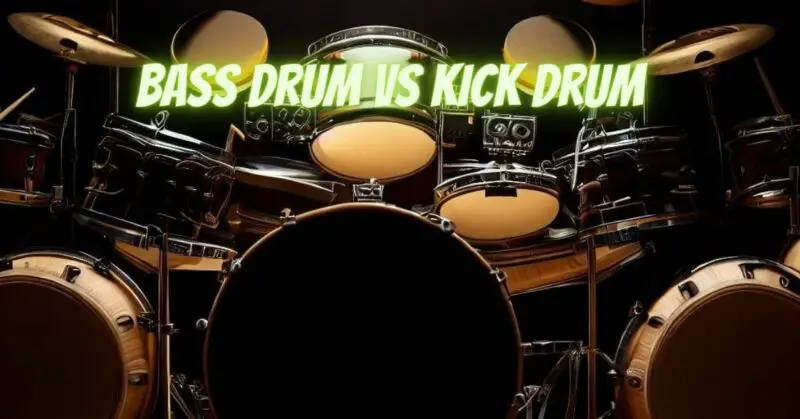In the realm of drumming, the terms “bass drum” and “kick drum” are often used interchangeably, leading to confusion among beginners and even seasoned musicians. While they refer to the same drum component, understanding the distinctions and commonalities between the bass drum and kick drum is essential for drummers seeking to refine their knowledge and technique. In this article, we will explore the characteristics, roles, and nuances of the bass drum and kick drum, shedding light on their unique attributes within the drum kit.
I. Defining the Bass Drum and Kick Drum: The bass drum and kick drum both refer to the largest drum in a drum kit, typically positioned on the floor and played with a foot-operated pedal. It serves as the foundation of the drum set, providing low-end depth and impact to the overall sound.
II. Terminological Variations: The term “bass drum” is more commonly used in orchestral and traditional drumming contexts. It refers to a drum with a deeper and resonant sound, often played with a mallet or beater. On the other hand, the term “kick drum” is predominantly used in contemporary drumming, particularly in popular music genres. It emphasizes the drum’s role as a percussive element, played with a foot pedal or “kick pedal.”
III. Physical Construction: In terms of physical construction, the bass drum and kick drum share similar characteristics. They both feature a large cylindrical shell, typically made of wood or synthetic materials, with a drumhead attached to both ends. The drumheads can be single or double-ply and may be tuned to various pitches based on musical preferences.
IV. Sound Characteristics: The bass drum is known for producing deep, low-frequency tones that create a sense of power and impact. Its resonance is often enhanced by the size of the drum and the presence of a port hole, allowing air to escape and increasing the drum’s projection. On the other hand, the kick drum shares these characteristics, emphasizing a punchy and percussive quality that is commonly associated with modern music genres such as rock, pop, and jazz.
V. Musical Roles: The bass drum and kick drum play distinct yet complementary roles within a drum kit. The bass drum primarily provides the foundational beat and pulse of the music. It establishes the rhythm and accents important musical moments. The kick drum, as a percussive instrument, adds definition and articulation to the drumming patterns, driving the groove and creating rhythmic variations.
VI. Playing Techniques: Playing techniques for the bass drum and kick drum often overlap. Both drums are typically played using a foot-operated pedal, known as the kick pedal. Drummers use their foot to strike the drumhead with a beater, controlling the force and speed to produce the desired sound. Various techniques, such as heel-up or heel-down, can be employed to achieve different articulations and dynamics.
VII. Evolution and Adaptation: Over time, the bass drum and kick drum have evolved to accommodate the changing demands of contemporary music styles. Today, the kick drum is often equipped with additional features, such as built-in muffling systems, adjustable ports, or dampening options, allowing drummers to fine-tune the sound to suit different musical contexts and preferences.
| Feature | Bass drum | Kick drum |
|---|---|---|
| Size | Larger | Smaller |
| Sound | Deeper | Sharper |
| Uses | Foundational rhythm | Driving beat |
| Sounds | Deep tom, booming bass | Sharp attack, percussive |
Conclusion:
While the terms “bass drum” and “kick drum” are often used interchangeably, understanding their distinctions and shared characteristics is crucial for drummers. The bass drum emphasizes a deep and resonant tone, while the kick drum highlights a percussive and punchy quality. Recognizing their roles, sound characteristics, and techniques will empower drummers to navigate the drum kit with precision and creativity, enriching their performancesand contributing to the overall musical experience. Whether you refer to it as a bass drum or a kick drum, embrace the nuances and possibilities of this essential component of the drum set, and let your rhythm and groove captivate audiences with every beat.


